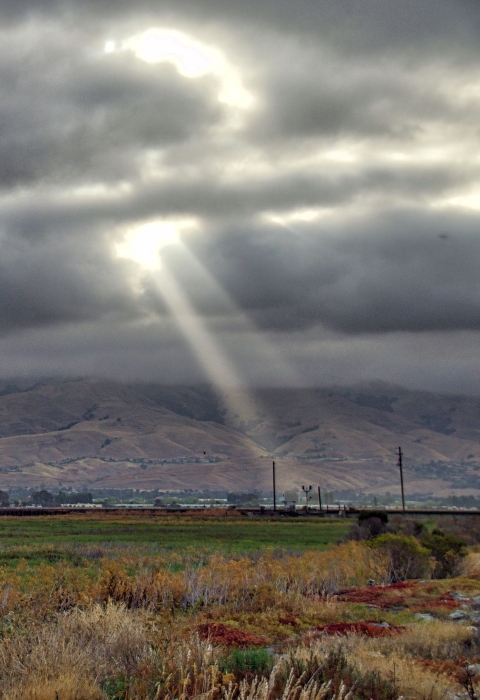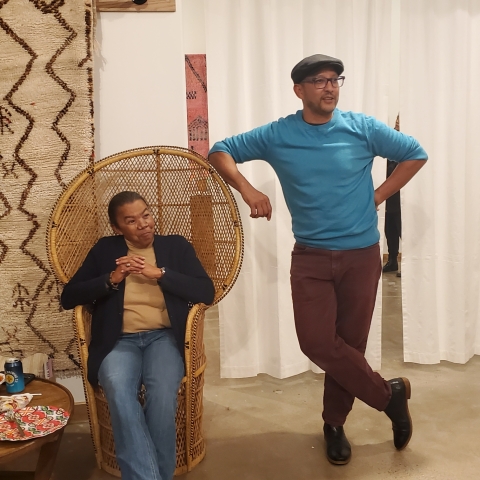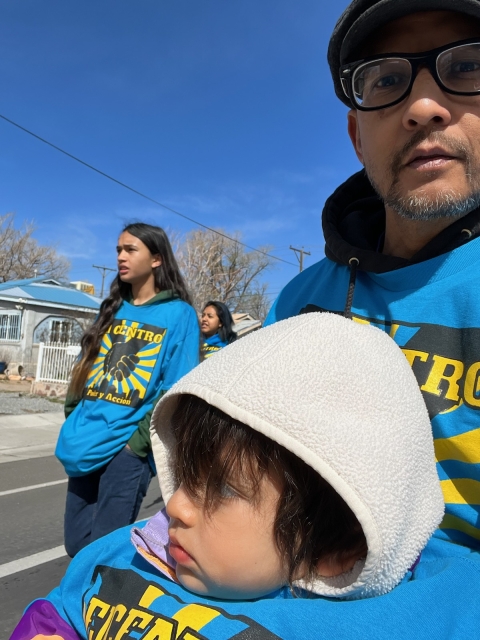The personal philosophy of Darrell Kundargi, a hydrologist with the Service, is that “our work approaches justice when we center the needs of the least powerful.”
He was born in Connecticut after his parents immigrated to the States from the Philippines and India. At the age of 2, he and his family moved to Sacramento, California. He now lives in Albuquerque, New Mexico, with his partner and children.
Kundargi received the Service’s 2024 Diversity and Inclusion Champion Award for work to center the voices and needs of people on the margins of the Service. As the co-lead for the Service’s Black, Indigenous and People of Color (BIPOC) Employee Resource Group, he has contributed to a significant cultural shift by co-creating joy and liberation with BIPOC staff and allies. Kundargi is also on the steering committee of the Environmental Justice Community of Practice. As a hydrologist, he is addressing the intersection of environmental justice and water among the Pacific Southwest Region’s refuges and communities.
How would you describe your path to the Service?
My path has been non-traditional. During my undergrad degree in environmental studies, I was often the only person of color in the classroom. I struggled with that. That struggle led me to take a lot of classes in ethnic studies, women’s studies, and queer theory. This was foundational because it shifted my focus to ways of knowing that are broader than environmental sciences. After college, I worked at a national domestic violence nonprofit. This was transformational because most of the staff and senior leadership were queer women of color. As a 22-year-old man in this space, I had a lot of patriarchy to unlearn.
Following this, I was a community organizer in San Francisco. I ran a teen dating violence prevention program with BIPOC youth. I worked with the youth to harness their culture and build alternatives to patriarchy. This work made it clear that the community knows what it needs. If you provide the resources they need and hold space for their input and creativity, amazing things happen.
I started to burn out doing this work and wanted to get back to working on the land. I decided to change careers, got a master’s in water resources, and was hired by the Service in 2006 as a field hydrologist. I’ve been with the Service for 18 years. For the first 14 years, there wasn’t space for my passion for social justice because it wasn't a part of conservation. The George Floyd uprising in 2020 changed all that. Until then, I had been one of the few, if not the only, person of color in the room. During the pandemic, virtual meetings gave me the chance to talk with BIPOC staff all over the country. We had a lot of conversations about the racism we experienced during our careers.
One thing we had in common was having to bear racist workplace experiences in isolation because our majority White workplaces couldn't understand what we were going through. Or worse, sharing our experiences led to hostility and retribution. These long, and often painful, talks broke the isolation imposed upon us. Conforming myself to fit into this agency had taken a toll on me and many others. Creating spaces of healing and support with other people of color alleviated the burden so many of us kept inside in order to survive. Through this grassroots work with BIPOC employees, my career started to change in ways that I had never imagined. It's no coincidence that Black women colleagues (I'm looking at you, Gwen Kolb, Shannon Smith, Charisa Morris, and Debra Bills) were instrumental in helping me see how to bridge this artificial gap between social justice and conservation. That's because I believe Black women have been at the forefront of just about every important social change movement in this country.
How have your personal experiences influenced how you approach your work?
If we were to look at a Venn diagram, environmental justice and employee justice would be nearly overlapping circles. The 2020 uprising forced the world to recognize that there’s an entire set of people and experiences that have been ignored for decades and beyond. Similarly, the uprising forced our agency to reckon with the lived experiences of BIPOC employees and of the communities that conservation has excluded. The way I approach my work is informed by my identity and personal experiences. Because I experience the world differently than the cultural center of the Service, my identity allows me to bring a different flavor to the work I do. I have to walk through the world as a dark-skinned, Asian-American, cis-gendered hetero man who is the son of immigrants. At the same time, I have to understand the world through the lens of White cultural norms and the North American Conservation Model. By nature, employees with marginalized identities bring so much to the table because of how we must navigate the world around us just to survive.
Working as a community organizer, 100% influences how I do my work. I understand first-hand the joys and challenges faced by people working in community organizations. I bring this knowledge when I meet with community organizations and representatives from Tribal Nations. I’ll tell them straight up that I know they're busy with their own priorities, many of which are literally life and death issues. I let them know I’m there to center their priorities in my work. That is such an important message to share and to back up with action. One of the phrases I commonly hear in the Service is that we’ll support community issues that align with our mission. But, if a community priority is maternal/child health, I will absolutely lose trust if I say, “I can’t help you, that’s not a conservation issue.” In this example, I see it as my responsibility to uphold the Service’s value of innovation to find a way to connect maternal/child health to the refuge purpose and to our agency’s mission. I see it as all of our responsibility to broaden our definition of conservation to include the needs of communities who have been systemically excluded from conservation.
That’s why environmental justice resonates so deeply with me. It's an environmental movement created by BIPOC that centers the needs of the marginalized and oppressed. It redefines the environment away from the historic idea of protected places far from people to the places where people live. It brings joy to my heart to see the Service recognizing that there are different ways of understanding conservation. This is reflected in the way environmental justice is now a priority for the Service. It’s reflected in the way we now value co-stewardship with Tribal Nations and Indigenous perspectives. It’s reflected in my own personal philosophy: Our work approaches justice when we center the needs of the least powerful.
What advice do you have for others who want to push environmental justice forward?
Centering environmental justice is not a set of instructions that I can give. It’s how I look at any issue that comes across my desk. I always ask myself the question, “What is the intersection of justice and this particular conservation issue?” The answer is always there. If I don't see it immediately, I assume that I need to learn more through research, asking colleagues, and most importantly, by talking to the community. Other questions I ask myself to find the intersection with environmental justice are, “Who’s not at the table?” “Who’s benefiting?” “Who's been harmed in the past?” and “Who's being harmed today?”
Conservation deals with resources of value. If you go far enough back in history, there’s almost certainly a terrible crime associated with that resource of value. The result of that crime manifests itself today. This is certainly true of the water resources that are the focus of my work. Who owns water and who doesn't wasn’t a matter of chance. There was purpose behind who has water and who doesn’t, and it affects communities today. These are historical issues with a modern reality. I often hear others express concern because they can’t change issues of the past. Systemic injustices still exist, and you can make an impact today.
Another crucially important consideration to advancing environmental justice is ensuring that justice exists in all aspects of our work, both internally and externally. For instance, if we’re going to bring other voices to a meeting about a conservation issue, we need to first assess if we have an equitable table where all voices will be equally honored. Have the people at the table done the work necessary to allow other voices to have an equal seat at the table? If the answer is no, then there’s internal work that needs to be done, either beforehand or in parallel. There is no secret I can give you. It’s your own work as an individual and within your program. It’s our work as an agency.





